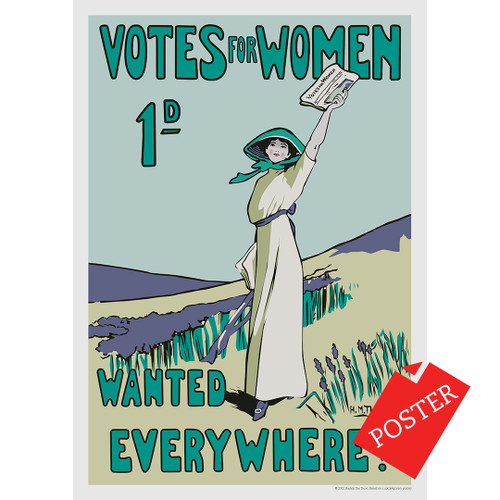This Votes for Women rosette is a copy of an actual suffragette rosette on display in the Bishopsgate Institute, London.
It took a long time for UK women to finally get the vote on an equal footing with men (in 1928), and the groups campaigning for women’s suffrage had a difficult task ahead. At the forefront of the early campaign was the National Union of Women's Suffrage Societies (NUWSS), which was founded 1897 under the leadership of Millicent Fawcett, when regional women’s suffrage societies with no political party allegiances came together in a union. It was followed by the more militant Women’s Social and Political Union (WSPU), which emerged in 1903 under the leadership of Emmeline Pankhurst in 1903. From 1908, the WSPU adopted the iconic colour scheme of violet, green and white, using these colours in sashes, rosettes and banners. Violet symbolised dignity, white purity, and green hope. We hope to recreate those sentiments here. Through these groups’ hard work, women did finally get the vote in limited circumstances in 1918 and equal voting rights with men in 1928.















